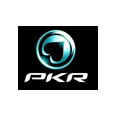You might be interested to re-purpose your workstations from time to time to get more RAM, up to date CPU, and more storage capacity. Is it logical to replace a few years old workstation even if it is working without hardware problems? Most of customers do not know exactly when they should re-purpose workstation. Here are some guidelines to check what type of computers can be used in a company and how to boost up performance.
Servers
In order to perform particular jobs, servers are usually configured with various components. NAS requires enough space for storage, whereas database server requires more RAM. These are tailored to perform particular tasks, therefore, it is complicated to re-purpose workstations.
If you have changed old SQL database server and selected new model for high performance, old database server can be used for finance or marketing department by making some minor changes. Storage and RAM are the two upgrades that are based on simple procedure, but can improve performance level.
Less valuable upgrades are related to RAID card and CPU. A few servers may have system for CPU upgrade; however, most of them need new motherboards, which means to upgrade PSU and RAM as well. If you need to boost up performance, instead of upgrading the motherboard, buy new system to meet your needs.
It is simple to install new RAID card; however, old servers do not offer sufficient cooling to keep this hot-running RAID cool. It is important to match RAID card with hard drives to get required performance. Many customers prefer to re-purpose server without changing hardware. They get required results by using software (like FreeNAS).
Workstations:
Just like servers, workstations need to configure to carry on various tasks. Case capacity of workstations gives great benefit when these are selected for re-purposing. Unlike rack server, it is much easier to improve performance of components in tower case. Increasing storage capacity through controller cards is much faster.
If you are interested to have more storage (for mechanical drives), make certain that there is enough cool air through the case. Usually heat is unnoticed as it is difficult to measure, but it damages computer hardware more frequently. Sensors are used in a lot of workstation boards to check level of heat.
Laptops
Nowadays, laptops are used as preferable system to work in most departments. Laptops do not offer re-purposing like desktops due to various reasons. First of all, laptops cannot work just like desktop computers. These are good to be used for designing PowerPoint slides, web browsing and email. You might be able to upgrade the laptop’s RAM and hard drive, otherwise, laptops are not easy to upgrade.
Conclusion
It is good to evaluate risks as well as benefits associated with re-purposing of computers. If your company has replaced old systems and you need to use them in other departments to save some money, keep in mind that IT experts will need time to arrange old these systems to work. Conversely, a new system can start working as soon as it is deployed. In addition, warranty is a compelling factor which leads to buying new systems, as laptops need frequent repair services.




















